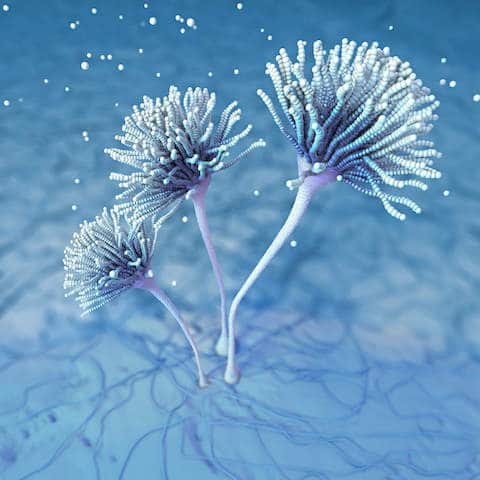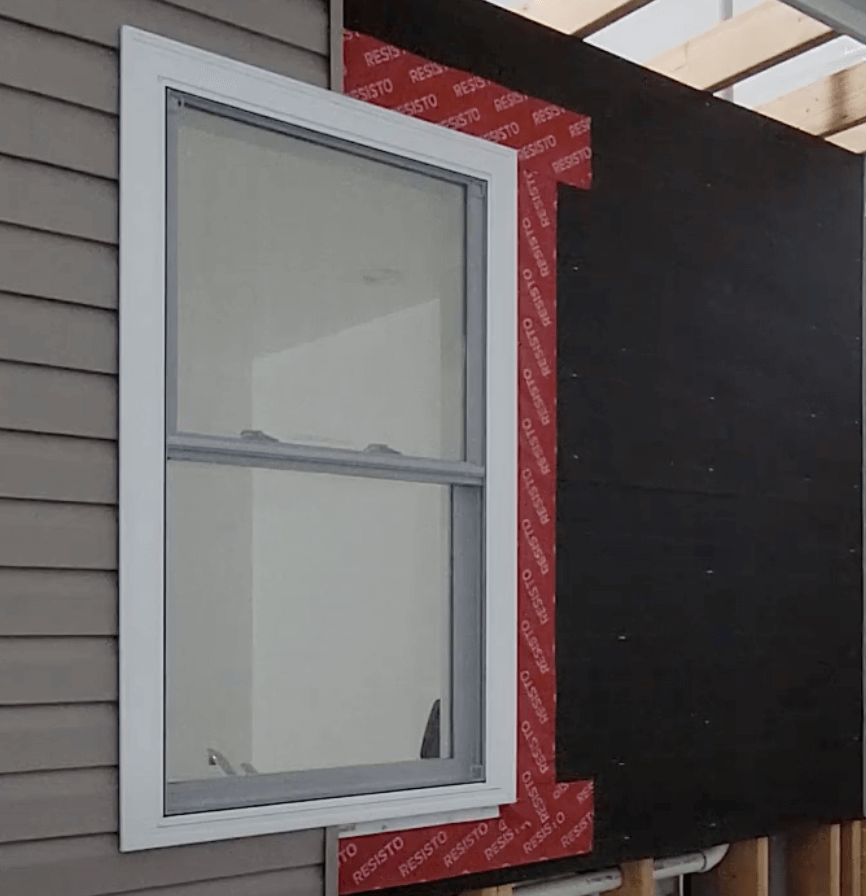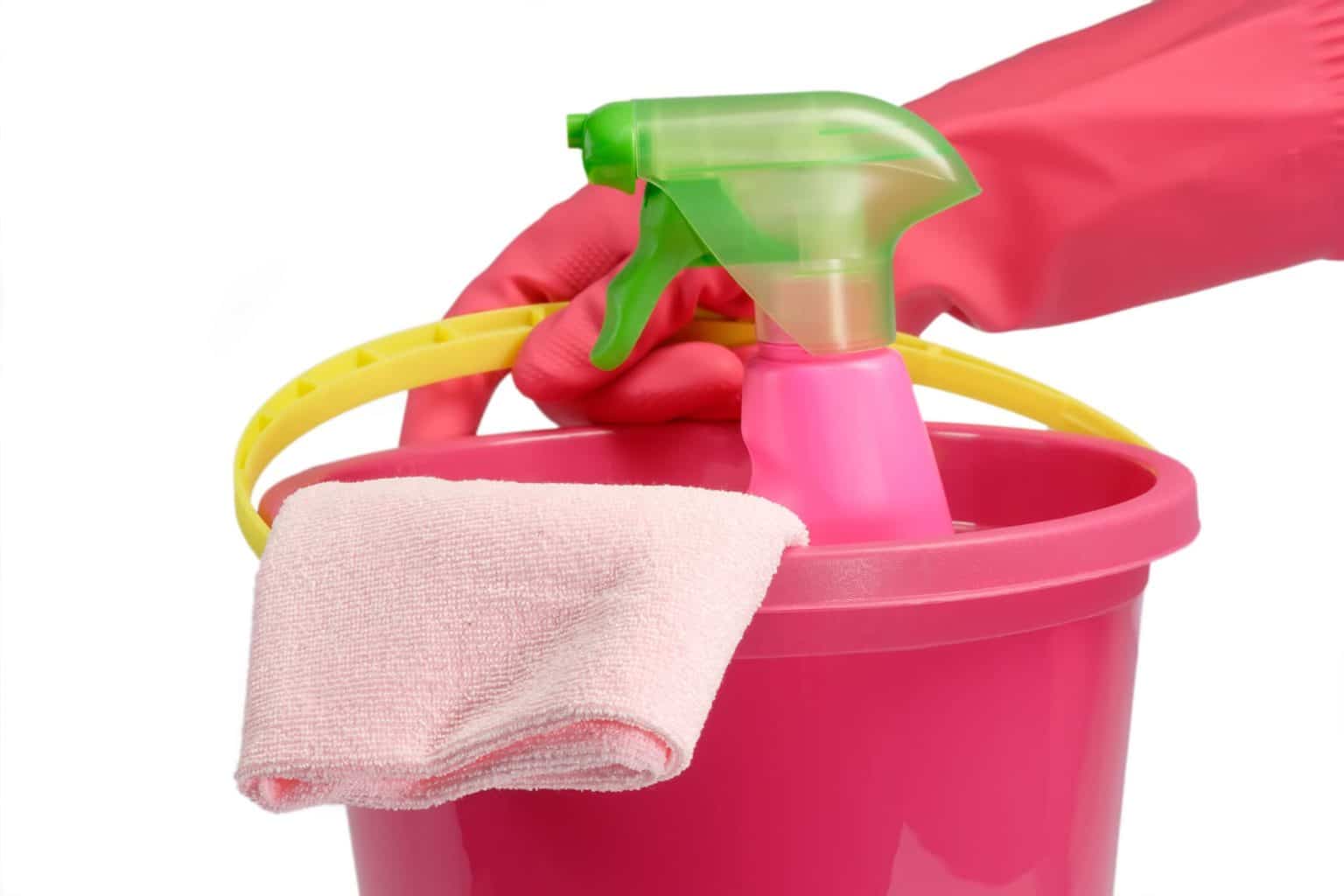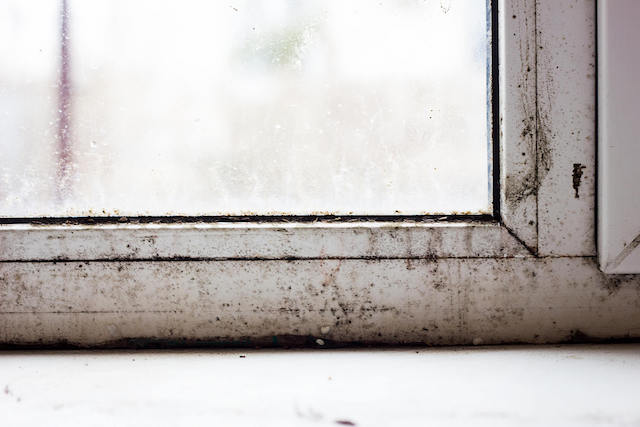No products in the cart.
Who doesn’t love a great set of windows? They give life to the building by allowing in light, offer the perfect opportunity for pets to creep on the outside world, provide much-needed sunlight to houseplants, and enable you to take a quick peek to see who the heck is knocking on the front door without having to just blindly open it. In short, they’re a huge part of what makes a house a home, which is probably why some individuals opt for full wall windows. Unfortunately, these structural components aren’t all sunshine and rainbows. Oftentimes, issues can lead to mold on windows and huge contamination problems in the home.
It’s not just mold on windowsills that can become a problem, though. Issues with how the window was put in can lead to growth inside of the wall, which is a much larger issue and requires quite a bit more work to remove. As many homeowners know, more work often leads to a higher cost. Not to mention, any indoor mold growth has the potential to trigger a long list of adverse health reactions and related conditions, particularly for those who are sensitive to mold.
Understanding the ins and outs of proper construction can help ensure that mold on windows isn’t a problem for your home, whether that be during construction, assessing the installation of an older home, or tackling a renovation project.

DO ALL HOMES HAVE A PROBLEM WITH MOLD ON WINDOWS?
A common misconception is that new homes are the way to go to avoid that fungus among us. That’s absolutely not true. A long list of poor construction practices can lead to mold growth before a family even gets the chance to move in, such as improperly storing structural components such as trusses on the ground for longer than a week. That’s why it’s always important to hire a mold inspector before moving into any home to see if any invisible to the naked eye problems are going on inside.
At the end of the day, new construction and older homes alike can develop a contamination issue. That’s why it’s important to have an action plan in place should mold growth pop up and work preventatively to avoid the problem in the first place. One main piece of this preventative puzzle is those gorgeous windows.
Improperly installed windows can allow for moisture to get inside the structure, opening the door (or in this case, window) wide open for mold growth. Frankly, this scenario occurs far too frequently in new construction, older buildings, and renovated homes. While homeowners don’t need to be absolute experts in the field of window installation, it’s important to understand the basics of a proper fit so that you can ask questions of builders or determine if they need to be replaced and done correctly.
HOW DOES MOLD ON WINDOWS OCCUR?
Before getting into the installation process, it’s useful to understand how mold on windows can occur in the first place. Aka, getting to know that fungus among us and why it loves our homes so dearly.
THAT HARDY MOLD
Mold is a type of fungus with over 100,000 species identified so far. Each species reproduces by releasing microscopic spores into the surrounding environment.¹’² Like the seeds of a plant, these microscopic spores will remain non-living particles until they land on a surface with the necessary components for life.
Thanks to their hardy nature, mold spores typically only need four things to begin growing, depending on the species in question.³
THESE FOUR COMPONENTS ARE:
- Oxygen (they need very little, which is why they can grow inside of walls)
- Temperature (40-90°F is preferred, but some species can live in extreme temperatures, which is how mold can grow in refrigerators)
- Food (they eat pretty much everything, like skin cells, wood, and other organic matter)
- Moisture (the often missing puzzle piece)
If these elements are present for 24–48 hours, that non-living spore will transition into a living organism. Also, like a plant, the living mold colony will put down roots called hyphae on the surface that it’s growing on. Once established, it will start that reproductive cycle and start shooting spores out into the air. Some species of mold can also create microscopic toxins called mycotoxins, further adding to the particle party in the surrounding space.⁴
A MOLD ON WINDOWS DEVELOPMENT STORY
When it comes to mold on windows developing, it often occurs from some type of structural issue that allows for moisture to creep in. A little gap here or a lack of vapor barrier there can let all of that outside moisture from high humidity, rain, and snow come indoors. And that’s not even including accidentally leaving the window cracked during a wet day outdoors.

Add in all of the yummy food sources, from the building components themselves to other organic matter floating around the space, and it’s basically a dream home for mold. If a lucky mold spore manages to land on a surface that’s now damp from intruding moisture, it’s a bright green light to start growing.
Once established, that mold colony will start pumping spores (and potentially toxins) into that indoor space. To make it even worse, this often occurs in the wall itself, meaning that the mold colony can exist for some time before the problem is noticed. Sometimes, the issue is never caught and will just continue to contaminate the home.
WHY SHOULD YOU CARE ABOUT PREVENTING MOLD ON WINDOWS? FOR YOUR HEALTH
The lack of discussion and consideration of this indoor contaminant has left quite a large gap in the research needed to fully understand the impact mold exposure can have on health. While we know it can trigger adverse health reactions, the mechanisms behind its ability to impact health aren’t well understood yet. Several factors also make it a tricky subject to nail down.
THESE INCLUDE:
- Genetics
- Immune system status
- Species of mold
- Presence of mycotoxins
- Presence of bacteria
- Volume of exposure
- Length of exposure
Each variable plays a role in whether or not someone living in a home with mold growth will experience adverse health reactions and the extent to which these symptoms will occur. While one person may only have the occasional sinus infection, another may develop over 30 debilitating chronic symptoms or related conditions, such as Chronic Fatigue Syndrome or Chronic Inflammatory Response Syndrome.⁵’⁶
Mold’s ability to affect health, regardless of the mechanism, largely rests on the size of the particles in question. Both spores, mycotoxins, and bacteria are all small enough that they’re measured in a unit called microns, which is 1,1000th of a millimeter. To put it into perspective, you’d have to line up 1,000 microns to equal the distance between the two tiny lines on a ruler.
The EPA dubbed these types of particles particulate matter and breaks them down into two categories.⁷
THESE CATEGORIES INCLUDE:
- PM10: particles that have a diameter of around 10 micrometers or less.
- PM2.5: fine particles that have a diameter of around 2.5 micrometers or less.
Their small size means that they’re able to enter the body through inhalation, absorption, and ingestion.⁸ Some of the particles are so small that they can zip right through the body and straight into the bloodstream. Once they make their way inside, the body tags them as foreign invaders and deploys the immune system to eliminate them as soon as possible. This immune response is often what leads to symptoms and related conditions.
As the exposure continues, the immune system can malfunction, triggering potential autoimmune conditions in the individual affected as inflammation occurs throughout the body. The immune system can also get overloaded and overworked, leading to a buildup of toxins developing inside of the body and a long list of symptoms to go along with it. And, since mold can trigger a systemic inflammatory response, these adverse health reactions can occur in any part of the body.⁹’¹⁰’¹¹’¹²’¹³

SYMPTOMS OF MOLD EXPOSURE CAN INCLUDE:
- Headaches
- Chronic Fatigue
- Brain fog
- Mood swings
- Anxiety and/or depression
- Hormone imbalances
- Digestive problems
- Rashes
- Hair loss
- Coughing
- Sinus issues
Again, though, no two people react the same way to exposure. The potential for a reaction is enough of a reason to build awareness of this indoor contaminant and add preventative measures like avoiding mold on windows to our knowledge base.
PREVENTING MOLD ON WINDOWS THROUGH PROPER CONSTRUCTION
The best way to avoid mold on windows is to start on the right foot from the very beginning. Aka, proper window construction techniques.
Here’s what you need to know about window construction, whether you’re looking to put in a window yourself or make sure the professionals are well-versed in the importance of avoiding mold on windows and are taking the right precautions to prevent an issue.
STEP ONE
The exterior of the building should be clad with a moisture barrier to help create a building envelope system. This material could come in various forms. For example, while older homes often have 35-pound felt paper, newer buildings typically opt for a material such as Tyvek or even more progressive methods such as a zip wall system.
STEP TWO
Once the exterior of the home has been clad in this moisture or vapor barrier, the next step is getting it to terminate correctly inside the rough opening of the window. The exterior vapor barrier surface should extend through the horizontal and vertical surfaces of the rough opening and stop inside the interior component of the home. In short, it should exist between the framing and the drywall.
STEP THREE
When the exterior vapor barrier has been installed correctly, the next thing on the list is to install what’s known as a pan, which helps direct water outside and away from the frame. The newer, progressive methods of creating the pan often utilize butyl rubber. Historically, building professionals used materials such as copper, sheet metal, and lead to create these pans. However, butyl was found to be the superior material in the construction industry because it’s a self-sealing membrane. Essentially, that means that when you put a nail through the material, it will essentially seal around the nail penetration. When constructing the pan prior to setting the window, the pan should extend across the horizontal plane of the bottom opening and up at least 6 to 12 inches on each side. It should extend the full width of the horizontal, lower jamb surface out and down approximately three inches in front of the window’s rough opening.

STEP FOUR
Once that’s complete, typically back caulking is up next. Back caulking involves applying a sealant to the rear surface of this nailing flange, which is located behind the butyl. Once this is complete, nails can be carefully placed into the nailing flange all the way around, utilizing every hole present in the material. This is typically done with an inch and a quarter or an inch and a half roofing nail with a larger head surface to make sure that it covers the entire hole in the nailing flange. Keep in mind that the window should be nailed fast and firm, but not hard. That can lead to breaking the window flange during the installation process.
STEP FIVE
Once the window is nailed firmly in place, the next stage is to create the watershed around the window. The watershed starts at the bottom by applying butyl rubber across the entire horizontal plane of the installed nailing flange and directly behind the j-channel. Once the horizontal butyl layer is correctly applied, two strips of butyl should be placed on the left and right vertical surfaces of the window’s nailing flange.
These strips of butyl typically extend halfway or fully across the lower horizontal butyl. Once these two sections of butyl are applied, a cap of butyl should be placed along the upper horizontal nailing flange, crossing both vertical surfaces and overlapping. Make sure that this layer extends at least two to three inches past the vertical butyl surfaces.
STEP SIX
After this is installed, the siding of choice can be applied. Siding can be anything from vinyl to stucco, cedar shake, and so on.
REACHING THE DESIRED OUTCOME
This method, when completed correctly, creates a primary, a secondary, and a tertiary layer of protection against water intrusion into the interior components of the home. Water intrusion often occurs when there are no waterproofing properties installed over the nailing flange. Typically, this leads to water beginning at the top or midpoint of the window and slowly making its way inside behind the nailing flange, ending up at the lower horizontal surface of the window’s rough opening. This water will start puddling and eventually, thanks to the nature of moisture moving towards drier material, will begin to make its way inside the building and adversely affect the framing, drywall, extension jambs, and trim on the interior components of the window.
Such an event can lead to mold growth, which typically requires the removal of cosmetic surfaces around the window and the window itself to properly correct the issue and ensure contaminants aren’t present in the home that can trigger adverse health reactions.
Following these general directions can help ensure a moldy window scenario doesn’t occur in your home.
HOW DO YOU KNOW IF A WINDOW IS INSTALLED IMPROPERLY?
It can be difficult to 100% guarantee that a window has been installed correctly if you weren’t there for the process. That being said, there are a few signs that could point to a potential problem.
THESE SIGNS INCLUDE:
- A noticeable draft near the window
- Signs of water bandage, like peeling or bubbling paint
- Gaps in the window and the frame (inside or outside)
- Increasing energy bills due to heat let in by gaps in the window
- Fog or condensation in between double-paned windows
If any of these occur, it often indicates an installation problem.
TAKING PREVENTION EVEN FURTHER
Construction is a huge part of ensuring mold on windows doesn’t happen to your home, but the preventative measures don’t stop there. Once this process is completed, those living in the home can also add a few extra steps to their home maintenance routine to ensure issues like mold on windowsills or some other contamination situation don’t arise.

ADDITIONAL WAYS TO PREVENT MOLD ON WINDOWS INCLUDE:
- Maintain an indoor humidity level of 35 to 50%: Any higher can allow mold to begin growing thanks to the moisture-rich air.¹⁴ Investing in a dehumidifier can help ensure that the indoor humidity remains at the correct level.
- Keep windows closed during wet and humid days: This helps prevent water from making its way inside and ensures that the indoor humidity level stays low.
- Make sure the interior materials stay dry: If any spills or condensation occur on the window or the windowsill, wipe this up quickly. Remember, mold can grow in as little as 24 hours, so time is always of the essence.
- Create airflow in kitchens and bathrooms: While using these rooms, make sure to turn on the exhaust fans (if possible) and take measures to ensure there’s proper airflow in the rooms. This will help keep the indoor humidity levels low and dry out any moisture.
- Clean the windows: A main aspect of prevention is removing the components necessary for mold to begin growing and any spores that manage to make their way inside. Cleaning regularly helps remove all edible particles and rogue spores.
- Fix any problem immediately: If you notice that the window has become damaged or something has led to a leak, resolve the issue as soon as possible to avoid moisture making its way inside.

TOOLS NEEDED:
- Protective gear: A mask, gloves, and goggles
- HEPA Vacuum: To qualify as HEPA, the machine must remove at least 99.7% of particles up to 0.3 microns in size.¹⁵
- Benefect Decon 30: This is a non-toxic product that utilizes botanical ingredients that help pull the mold particles away from the surface so they can be removed.
- Spray bottle: This will hold the Benefect.
Microfiber towels: These are 100 times better at removing particles from a surface than regular rags.
One thing you should never use to handle a mold problem is bleach. ¹⁶
Once you have your tools in hand, you can jump in and get started.
STEPS TO GET RID OF MOLD ON A WINDOW INCLUDE:
- Put on your protective gear
- Place the Benefect Decon 30 into the spray bottle
- Thoroughly HEPA vacuum the entire surface
- Spray the surface with Benefect and allow this to sit for 30 seconds (do not allow this to air dry)
- Wipe the surface using a microfiber towel
Complete this process at least three times to ensure hard-to-remove contaminants like mycotoxins and bacteria are eliminated. It’s also a good idea to deep clean the surrounding areas as well, to remove any particles released by the mold colony. Once you’re finished, either discard your clothes or throw them in the wash with a botanical cleaner like EC3 Laundry Additive.
If it’s still discolored after your remediation efforts, mold could be growing behind the paint, and the surface needs to be removed.
After you’re finished, keep a close eye on the area. If the mold comes right back, there’s a musty odor, or you begin experiencing symptoms, it’s time to call in a mold inspector to see if there’s a hidden issue.
HOW DO YOU KNOW IF YOU HAVE A MOLDY WINDOW PROBLEM?
Figuring out if mold on windows is occurring in your home requires the use of the senses.

VISUAL INSPECTION
With so many species of mold existing in the world, colonies can come in a variety of colors, including white, green, blue, pink, grey, black, brown, and everything in between. They can also grow in various shapes and textures, such as powdery, slimy, velvety, or fuzzy.
If any of these is visible on the window, it typically indicates a mold colony has taken up residence.
ODOR INSPECTION
Not all mold growth is visible. It could be a relatively new colony that’s not established enough to be visible to the naked eye yet, or it could be hidden deep within the wall. Using your nose can help determine whether or not there’s a problem that you can’t visually see.
Colonized mold often creates an earthy, musty, damp smell while it’s growing due to releasing gases called microbial volatile organic compounds (MVOC).¹⁷ If this odor is coming from the machine, it means there is a problem inside.
HEALTH STATUS INSPECTION
To make matters more complicated, not all mold is visible, and not all growth creates a smell. In cases such as these, it’s important to listen to your body. If you or a family member develops chronic symptoms with no clear root cause, it could be a contamination issue in the home, like mold on windows. Also, if symptoms flare up or develop while in the room or near the window, that can indicate a problem. These responses are the body’s way of alerting you that something isn’t quite right.
Our bodies are amazing warning systems, which is hugely important when it comes to the environment around us and whether or not it’s helping or hurting our ongoing wellbeing. It’s up to us to listen to and figure out what the root cause is so that it can be eliminated.
If any of the three boxes above are checked off, it’s time to get started on creating a plan to properly get rid of mold on windows.

NON-TOXIC WINDOWS FOR ALL
With more and more homes experiencing water damage, it’s more important than ever for homeowners to increase their awareness of these indoor spaces and how they can impact their health. Understanding how mold on windows can occur and how to prevent it from turning your home into a toxic particle party is a fantastic step towards safeguarding our homes. When it comes to mold, the more you know and actively build your awareness, the better.
At the end of the day, no one wants to live in an indoor environment that negatively affects their health, and we shouldn’t have to. Adding this information to your knowledge base can help ensure that those windows remain the light-bringing beauties that they’re meant to be and aren’t covered in mold growth and other contaminants.
Health begins at home.™
Still Have Questions?
A member of our team is here to help! Click on “Get Started ➤” below to book a consultation with a member of the HOMECLEANSE team. We have a few quick questions that will help us put together a roadmap to solve or prevent all of your mold problems.
Two minutes of your time could lead to better health for you and your family.
- Environmental Protection Agency. (n.d.). Mold. EPA. Retrieved from https://www.epa.gov/mold.
- Centers for Disease Control and Prevention. Basic facts about mold and dampness. Centers for Disease Control and Prevention. Retrieved from https://www.cdc.gov/mold/faqs.htm.
- Lstiburek, J., Brennan, T., & Yost, N. (2002, January 15). Rr-0208: What you need to know about mold. Building Science Corporation. Retrieved from, https://www.buildingscience.com/documents/reports/rr-0208-what-you-need-to-know-about-mold/view.
- World Health Organization. (n.d.). Mycotoxins. World Health Organization. Retrieved from https://www.who.int/news-room/fact-sheets/detail/mycotoxins.
- EPA. (n.d.). Health and Environmental Effects of Particulate Matter (PM). EPA. Retrieved from https://www.epa.gov/pm-pollution/health-and-environmental-effects-particulate-matter-pm.
- Nchh. (n.d.). Mold. NCHH. Retrieved from https://nchh.org/information-and-evidence/learn-about-healthy-housing/health-hazards-prevention-and-solutions/mold/
- Shoemaker RC, House D, Ryan J, Vasoactive intestinal polypeptide (VIP) corrects chronic inflammatory response syndrome (CIRS) acquired following exposure to water-damaged buildings. Health, 2013;5 (3): 396-401.
Brewer, J. H., Thrasher, J. D., Straus, D. C., Madison, R. A., & Hooper, D. (2013). Detection of mycotoxins in patients with chronic fatigue syndrome. Toxins, 5(4), 605-617. - Environmental and Occupational Health Assessment Program, & Environmental and Occupational Health Assessment Program, & Health Science Section, Mold Basics for Primary Care Clinicians (2009). Hartford, CT; Connecticut Department of Public Health. , H. S. S., Mold Basics for Primary Care Clinicians 1–10 (2009). Hartford, CT; Connecticut Department of Public Health.
- Curtis, L., Lieberman, A., Stark, M., Rea, W., & Vetter, M. (2004). Adverse health effects of indoor molds. Journal of Nutritional & Environmental Medicine, 14(3), 261-274.
- Bush, R. K., Portnoy, J. M., Saxon, A., Terr, A. I., & Wood, R. A. (2006). The medical effects of mold exposure. Journal of Allergy and Clinical Immunology, 117(2), 326-333
- Fisk, W. J., Lei-Gomez, Q., & Mendell, M. J. (2007). Meta-analyses of the associations of respiratory health effects with dampness and mold in homes. Indoor air, 17(4), 284-296.
- Wild, C. P., & Gong, Y. Y. (2010). Mycotoxins and human disease: a largely ignored global health issue. Carcinogenesis, 31(1), 71-82.
- EPA. (n.d.). A Brief Guide to Mold, Moisture, and Your Home. EPA. Retrieved from https://www.epa.gov/mold/brief-guide-mold-moisture-and-your-home#tab-6.
- EPA. (n.d.). What is a HEPA filter? EPA. Retrieved November 16, 2021, from https://www.epa.gov/indoor-air-quality-iaq/what-hepa-filter-1.
- EPA. (n.d.). Should I use bleach to clean up mold? EPA. Retrieved from https://www.epa.gov/mold/should-i-use-bleach-clean-mold.
- Environmental Protection Agency. (n.d.). What does mold smell like? EPA. Retrieved from https://www.epa.gov/mold/what-does-mold-smell.
